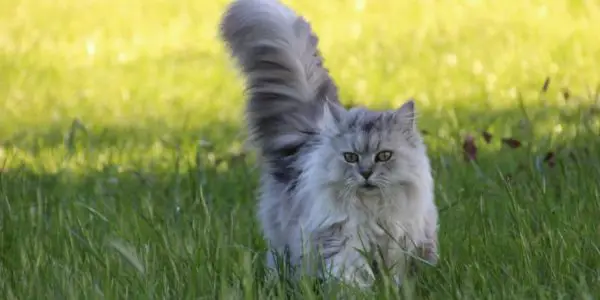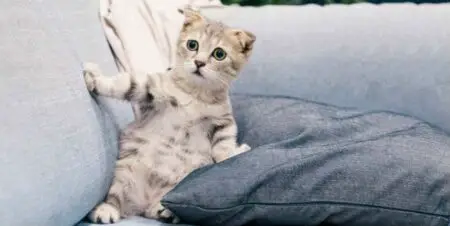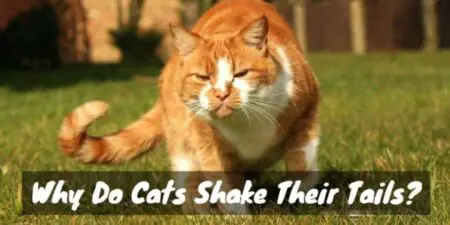They are sleek and furry, fluffy, or just a tiny stump. In the case of the Manx breed, they’re not there at all. They’re cat tails. Enigmatic and elegant, they can’t help but make us wonder – why do cats have tails?
Cats evolved their tails for three main reasons – balance, communication, and the general health of the spine. People tinker with the breeding of cats to change or even completely eliminate them to make their kitties look cute, but a natural, healthy cat will have a tail. They are essential to cats.
Tails are so important to cats that they often do not like their tails touched. When petting a cat, it’s always best to avoid the tail and instead pet the head behind the ears and along the spine. Leave the tails and paws alone.
1. Tails For Balance
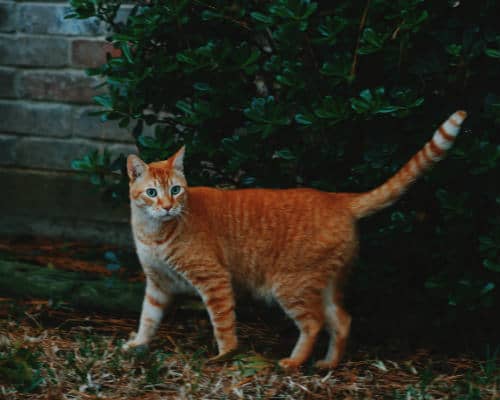
Watch a cat race after a toy or an unlucky rodent. The cat makes hairpin turns at top speed to catch its prey. This requires precise balance, which is given by the tail.
Also, watch when a cat walks along a tree branch, shelf, or other narrow ledge. The cat uses a tail like a counterbalance to keep from falling off. This makes cats able to prowl very narrow areas like the tops of fences.
Cats born with very short tails, like the Japanese Bobcat, the American Bobtail, and even some tailless Manx cats, can often climb and hunt. Balance and agility depend on the individual cat’s health.
2. Tails For Communication
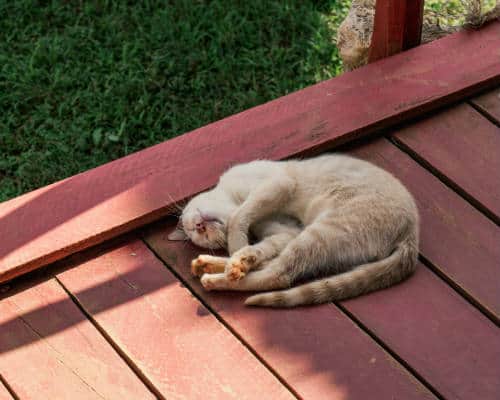
A cat’s tail rarely rests, even when the rest of the cat is resting. It constantly twitches, swishes, or curls about. This is not just restlessness but a way for the cat to communicate with its own kind and with humans.
Cats communicate using their tails in two ways – by the position of the tail and how they manipulate the hairs on the tail. This tail language is not so difficult to learn. Tail positions let other cats know how they are feeling and whether another cat should come closer or run away.
Cats with short tails or without tails are often attacked by other cats. This is because they cannot let their feelings be easily known through the position of their tails. It’s like the tail-impaired cat is talking another language from cats with tails.
Tail Position Meanings
Here is a general interpretation of cat tail movements that all cat owners should learn in order to avoid painful scratches or bites from their feline friends:
- Tail lashing quickly back and forth: Cat is upset. Get away.
- Tail is down tucked between the legs: Cat is scared or sick. Stay away.
- Tail moving slowly or twitching: Cat is relaxed.
- Tail-tip slowly twitching or moving back and forth: Cat is interested in something like a toy or mouse and is going to study it a while. Some cat will do this before pouncing.
- Tail is down below the spine: Cat is wary about something and not sure of the situation.
- Tail is up or up with a curled tip: Cat is feeling good.
- Tail is up and another cat is nearby: Cat is inviting the other cat for a friendly sniff.
- Tail curled around the tail of another cat or the legs of a favored human: Cat is feeling affectionate and friendly.
- Tail is straight up and quivering: Cat is marking territory with its urine. This is called spraying. Usually only unaltered males do it, but sometimes neutered males or even females will spray.
All parents should teach their children the tail positions of a mad or frightened cat. This will help the children avoid getting hurt by cats. Children should never approach a strange cat.
Tail, Eye, and Ear Combinations
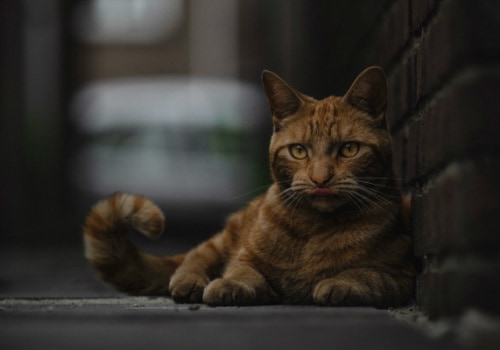
Cats do not speak all of their body language with their tails. Other cats and cat caretakers need to look at the cat’s eyes, ears and general body position in order to know what the cat is feeling.
Cats may place their tails in the same positions but for very different meanings. For example, a cat may raise its tail to show friendliness or in confusion over a new item of furniture placed in a familiar room. Look at the ears to see how the cat feels: ears moving or at the sides mean the cat is upset or unsure about what is happening.
Not all cats use exactly the same body language. Over time, owners learn to decipher their feline friends’ moods by scanning each cat’s tail, eyes, ears, and body.
Tail Communication: Puffing Out Tail Fur
For cats, bigger tails are better. To make them look bigger (and therefore make themselves look stronger), they raise all the hairs on the tail or all the hairs on its entire body. This is usually called “puffing” or “puffing out.”.
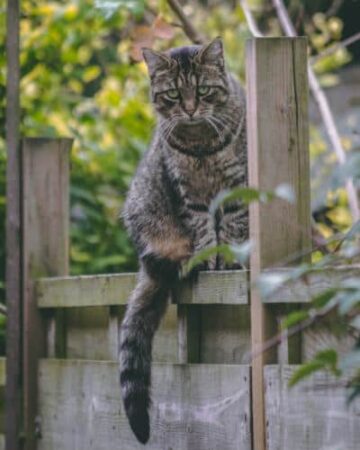
When watching a cat, check to see if the tail is its usual width or is puffed out. If it is puffed, this means the cat is upset, angry or scared. Back away until the cat calms down.
Sometimes cats and especially kittens will puff out all their fur, arch their backs and pin back their ears. They often bounce about and then streak like lightning about the room. This is sometimes called a “war dance” and is merely a playful expression of high spirits.
3. Tails For Overall Health
Just how a tail – even a stunted one – helps a cat’s overall health is not entirely clear. Manx cats, only of which some are “rumpies” or born completely tailless, are prone to a condition called Manx Syndrome. It’s also known as spina bifida, spinal cord dysplasia, or spinal dysplasia.
Like it or not, a cat’s tail is a normal part of a cat’s spine. When cats carry a gene mutation that causes taillessness, it almost always causes spinal problems, hind limb paralysis, and often incontinence.
Just how deadly is the gene for taillessness? Kittens born with copies inherited from both parents die before birth. Any adult tailless Manx possessed only one copy of the tailless gene. Manx cat breeders never breed a completely tailless cat to another tailless cat but instead, breed the tailless Manx to a Manx with a short tail or normal tail.
4. Tails As Toys

Cats and kittens have another use for their already versatile tails – that of toys. Cats usually do not chase their tails like dogs but reach around to grab it and bite the tip. It’s the toy they can never lose (save for a bad accident).
Cats and kittens look silly going after their own tails as if they were the juiciest mice on earth. However, there is a practical reason why cats play with their own tails.
Some animal experts believe that cats’ hunting instincts are triggered by the movement of their tails. They just cannot resist pouncing on anything that twitches so invitingly. Play is an important way for predators like cats to learn better how to hunt.
5. Tails Help Make The Cat a Cat
Tails are very important to cats. They help the cat’s balance when hunting, help communicate with other cats and seem to help with overall neurological health. Cats also like to play with their tails, which gives them good hunting practice.
Cats protect their tails and so do not like others touching them. However, when a cat really likes another cat, another animal or a human being, a show of affection is to wrap the tail around the friend. Take it as a compliment when a cat touches with its tail.
Cats born without tails are seriously handicapped. They often develop bad health problems because of this abnormality of the spine. Cats born without tails should never be bred together as the kittens never survive birth.
Tail Injuries In Cats
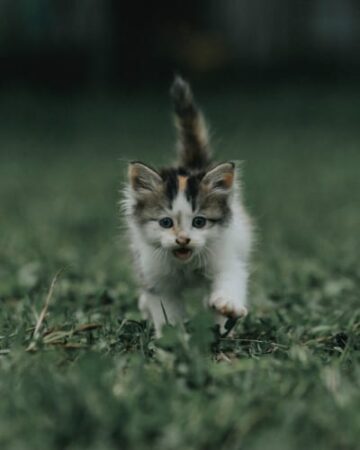
A tail injury is a spinal injury. Cat tails need to be protected and treated as carefully as the rest of the backbone. This is because the tail and the rest of the spine carry nerves that help control the whole body.
Cats with tail injuries need prompt medical care or severe and often life-threatening complications will result. While the cat is convalescing, expect it to be incontinent. It cannot help it.
In severe injuries or complications from injuries like gangrene, a tail may need an amputation. It takes a long time for a cat to learn to live without a tail. They may be scared and hide for days but eventually adjust.
One Last Fun Cat Tail Fact
The domestic cat is the only cat of its size to be able to stick its tail straight up while walking. Wild cats rarely lift their tails up above their backbones when walking, although they can lash their tails from side to side as pet cats do.
Just why domestic cats lift their tails straight up when walking and wild cats do not remains unclear. It could be a way that domestic cats recognize others in their species. Perhaps even a domestic cat does not want to tangle with a wild cat.
This unique tail position makes the tail the unique signature of the pet cat in the wide world of feline species.
Conclusion
So there you have it – everything you ever wanted to know about the tail of the domestic cat! 🙂
"In ancient times cats were worshipped as gods; they have not forgotten this."
-- Terry Pratchett

